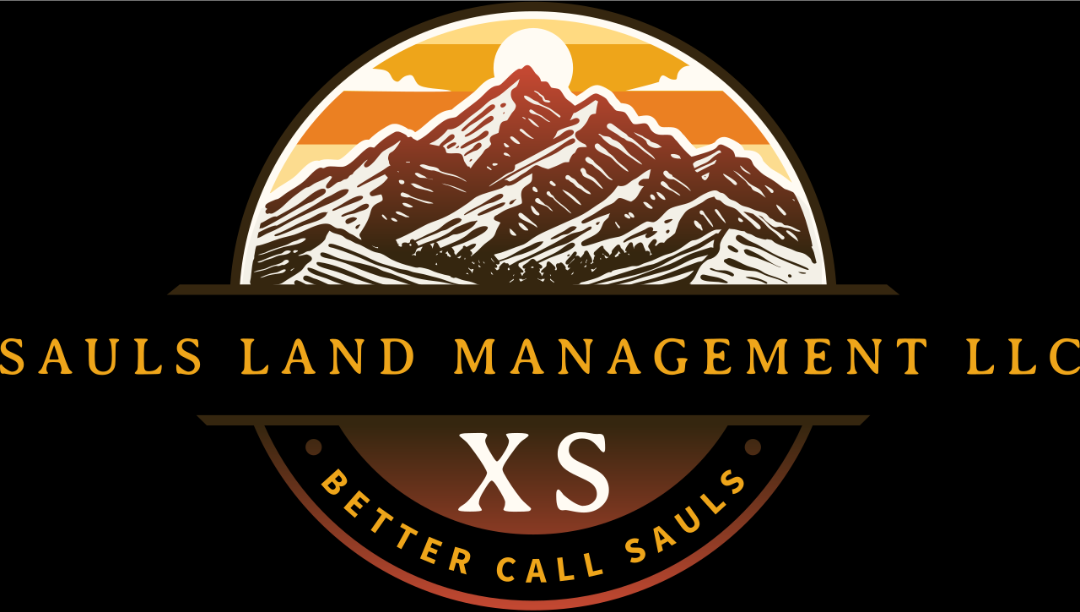When a strong spring storm rolls into Sevierville, TN, most homeowners think about securing patio furniture, checking gutters, and hoping the power doesn’t go out. But one of the biggest dangers lurking in your yard may not be so obvious—a tree at risk of falling. Trees can appear strong and healthy to the untrained eye, but small warning signs often go unnoticed until it’s too late.
If a tree falls on your home, car, or power line, it can cause thousands of dollars in damage—and more importantly, threaten the safety of your family. That’s why identifying the signs before the storm hits is so important. At Saul’s Land Management LLC, we help Sevierville homeowners assess and manage dangerous trees before they become a hazard.
Here’s what to look for when trying to determine if a tree on your property is at risk of falling during a storm.
Table of Contents
1. Leaning or Tilting Trunks
A slight lean doesn’t always mean danger—but a sudden tilt or increase in lean angle is a red flag.
Watch for:
- Trees that have shifted after heavy rain or wind
- Cracked soil at the base, suggesting movement
- Leaning trees with exposed roots on one side
Leaning trees may have compromised anchoring, and when a storm hits, wind pressure can send them crashing down.
2. Cracks or Splits in the Trunk or Limbs
Inspect your trees for large vertical cracks, splits, or seams in the bark, especially where branches meet the trunk. These weak points can give way under high winds or heavy rain.
Common indicators include:
- Cracks running deep into the trunk
- Splits where large branches attach (also called co-dominant stems)
- Bark peeling away, exposing bare wood
Once the integrity of the trunk is compromised, it’s only a matter of time before the structure gives way.
3. Dead or Hanging Branches
Dead branches are extremely brittle. Even moderate wind can cause them to snap off, potentially harming people, pets, or property.
Look for:
- Branches without leaves during growing season
- Limbs with peeling bark or visible decay
- Branches caught in the canopy, ready to fall at any moment
This is one of the most common and easily preventable risks. Saul’s Land Management offers professional tree trimming services to remove these hazards safely.
4. Mushrooms or Fungi Growing Around the Base
While a few mushrooms in your yard aren’t a cause for concern, large fungal growths at the base of a tree could indicate root rot or internal decay.
Warning signs:
- Conks or bracket fungi growing along the trunk or near the roots
- Soft, spongy areas at the tree base
- A hollow sound when tapping on the trunk
Rotten roots mean the tree has lost its main source of stability, making it especially dangerous in wet or windy conditions.
5. Tree Was Damaged in a Previous Storm
If a tree on your property lost a large branch or was struck by lightning during a past storm, it may be structurally weaker than it looks.
Signs of hidden storm damage:
- Bark stripping or missing areas
- Half-damaged branches with new growth on only one side
- Previously broken limbs that were never removed properly
Even if it seems to be recovering, the internal structure may be permanently compromised. Have a professional inspect it before the next storm hits.
6. Root Issues or Uprooted Soil
Roots are the foundation of any healthy tree. If they’re damaged, diseased, or partially uprooted, the whole tree becomes unstable.
Root failure warning signs:
- Visible roots lifting out of the soil
- Soil cracking or heaving near the base
- Tree appears “wobbly” or unstable when the wind blows
Trees with damaged root systems are often the first to fall during storms—especially after heavy rain loosens the soil.
What Should You Do If You Spot These Signs?
If any of these symptoms sound familiar, it’s time to call in the experts. At Saul’s Land Management, our trained tree care professionals can:
- Evaluate the health and stability of your trees
- Trim or remove hazardous limbs
- Recommend full removal if a tree poses a significant risk
- Provide emergency tree removal after storm damage
Preventative tree care is always safer and less costly than emergency removal. Don’t wait for a spring storm to test the strength of your trees.
Worried a tree might fall during the next storm?
Call Saul’s Land Management LLC today at (865) 280-0428 or visit https://saulslandmanagementllc.com/ to schedule a tree inspection. Let us help you keep your property—and your peace of mind—safe this season.

